In essence, the straight razor is a shaving blade that can be folded into its handle. They are also known as open razors or even cut-throat razors and are not to be confused with the double edge razor that was described in detail before. Today, I’d like to start with a brief history of shaving, elaborate on the advantages and disadvantages of straight razor shaving, and provide a few tips on where and how to buy a straight-edge razor.
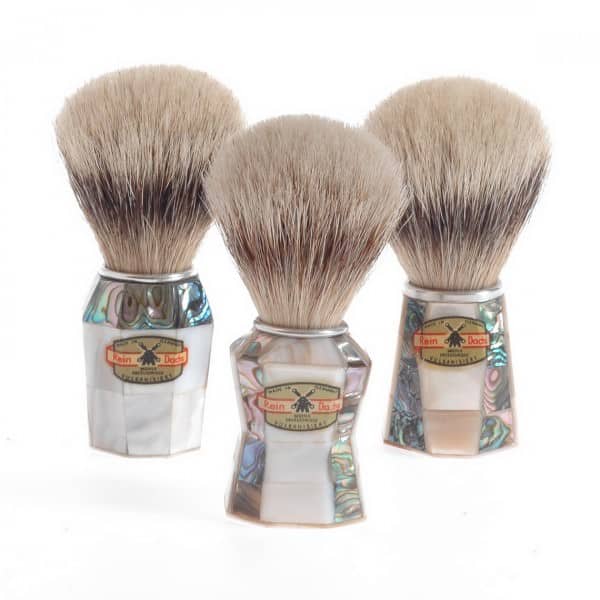
Shaving History
The act of shaving probably has its origins in Africa, some 100,000 years ago, back when cavemen began to pluck their facial hair using crude tweezers made of stone or notched seashells. The reasoning behind the sudden desire to rid themselves of their facial hair remains unclear. Whilst some simply see it as a result of the development of the essential tools and techniques required for the activity, others believe it was mainly to get rid of lice and other parasites.
Whichever the case might have been, around 30,000 BC men tired of individually plucking out their facial hairs and invented flint blades, which they were able to sharpen sufficiently in order to shave. Shortly after the introduction of flint, some men started using sharpened seashells as blades, though it was not until about 3000 BC, when mankind invented metalworking, that flint faced a serious rival. At around this time, copper-alloy razors appeared in ancient Egypt and India. The Egyptians switched to bronze razors between 1567 and 1320 BC, a big step forward in metallurgy.
During his war against Persia, Alexander the Great ordered his Greek and Macedonian soldiers to shave off their beards. This legacy survived his premature death, and his victorious army continued to shave, initiating a trend that was imitated by civilians through the empire. Alexander wasn’t alone in seeing the clean-shaven look as a step up for civilization. When Peter the Great became Russian tsar in the late seventeenth century, he too decided that beards were archaic and taxed anyone who wore one.
From the seventeenth century onwards, shaving technology improved enormously. The first recognizable straight razor appeared in Sheffield, England in 1680, and by the middle of the 18th century high-quality blades had become available.
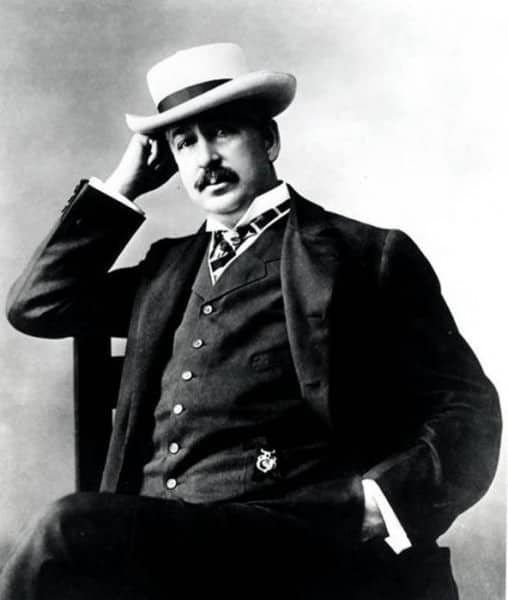
Shortly before the First World War, Mr. King Camp Gillette patented his safety razor and made a deal with the U.S. armed forces. Every American soldier sent off to Europe was issued a Gillette safety razor in his backpack. However, when the men continued to use them after the war, it became apparent that the way that men liked to shave was changing. Nevertheless, enthusiasts of the traditional straight razor have refused to give up their tool of choice to this day, and the number of straight razor users seems to be increasing again.
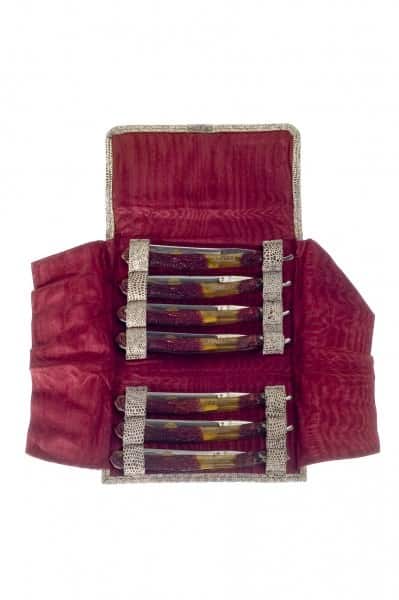
Advantages & Disadvantages of Straight Razors
Using the straight razor gives you a smoother shave than even the most modern electric or safety razors, and if done accurately, reduces or eliminates razor burns and nicks. After the initial investment, it reduces the cost of shaving by eliminating the need for expensive razor cartridges or disposable blades. It also reduces your environmental impact with little to no waste.
Straight razor shaving can make you feel like a craftsman – something not offered by the bare utility of a safety or electric razor. It is a daily exercise that will separate you from the masses. However, the price of quality that it takes a bit more effort and time to use than a simple safety razor, and most men do not have enough time to spend 20 minutes shaving.
Now, the shave itself should not take any longer than it does with a safety razor, but you’ll need additional time to maintain your blade, which has to be honed and stropped. Shaving with a straight razor also requires more concentration in the early morning hours than any other shaving alternative. So, you’ll have to grow accustomed to being more alert when you shave, in order to avoid hurting yourself.
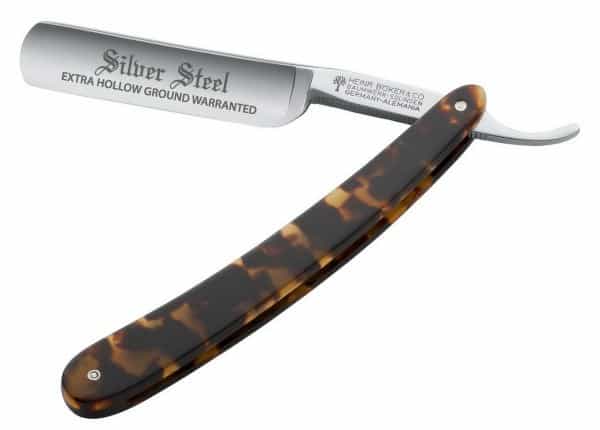
How to Buy a Straight Razor
Unlike other razors,you can purchase straight razors either new or used! For example, you may find them on eBay, at flea markets or antique stores. Almost all used razors require serious reconditioning work before they can be used. A professional blade restoration will help you to avoid irritating your skin and causing nicks and cuts, but as a basic rule, if you are a novice to straight razors, you should abstain from using second-hand blades.
So, now you are in the market for a new razor. In my experience, you should buy one that is made either in Germany or France. This may seem harsh towards other manufacturers and indeed other countries, but I have tried many of them from around the globe and this is what I have found to be true. If you ever find yourself tempted to go for a new straight razor “budget” alternative, try not to give in and at least be extremely cautious. They may look wonderful, but they are frequently made from inferior steel and you will feel the difference on your skin. Many are in fact unusable.
To determine whether the quality of a straight razor is decent, you can employ the ´finger nail test´. Only the edge of a perfectly ground blade can visibly be bent on your thumbnail, returning immediately to its original shape when released. Cheap blades are too thick and don’t bend, which is why they are referred to by some as ´axes.´
German Straight Razors
When I say straight razors from Germany, I basically mean the town of Solingen, which has been the center of quality cutlery for ages. In my opinion, they produce the best blades and although I’m German, once you see the quality I think you’ll agree that there’s no bias here. Straight razors with the word Solingen on the blade are so good that the name had to be protected legally in 1938.
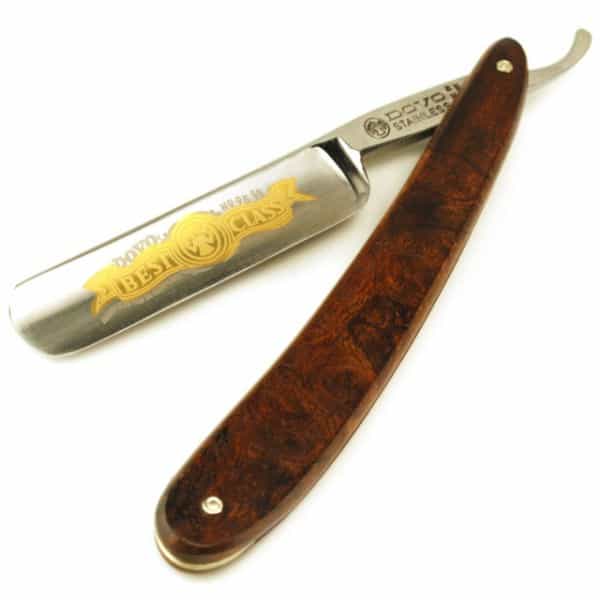
Dovo
One of the commonly known brands from Solingen is Dovo. This venerable company was founded in 1906 by Mr. Dorp and Mr. Voss – hence the name Dovo. Over the years, Dovo has taken over a lot of other straight razor manufacturers (Tennis, Bismarck, Ankerflagge, Kronpunkt and Fontana), which brought together a wealth of manufacturing experience, resulting in a superior product. Generally, their straight razors will last for a long time and even their least expensive razors will serve you well for years as long as you maintain them properly. The lower end Dovo Best Quality razors can be purchased at prices from $110 / 85 € up to $300 / 230 €.
The options for the handle material are manifold: you can choose between desert ironwood, Spanish oak, buffalo horn, ebony or ordinary plastic variations. Those handles made of wood are normally treated to be water-resistant, though this isn´t really necessary because it is not supposed to get wet. At the end of the day, the material of the handle doesn’t make a big difference and it simply comes down to personal preference.
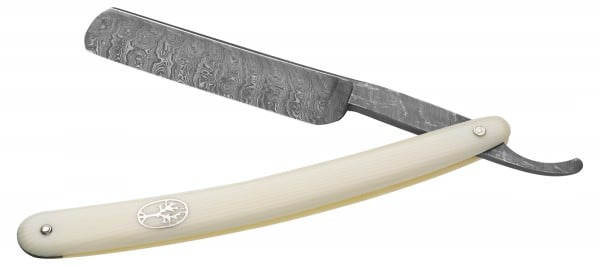
Böker
Another manufacturer of straight razors from Solingen is the less well-known brand Böker. Founded in 1869, Böker has always focused on using nothing but the best materials, and they aim to maintain the highest production standards. Following World War II, the manufacturing of straight razors gradually declined, but in recent years there has been a straight razor revival. Although mostly known for their hunting knives, Böker also boasts fantastic straight razors.
All of them are made using traditional methods and up to 150 individual production steps are necessary to create these shaving masterpieces. Of course, everything is made by hand and their most expensive model is made of powdered, metallurgical stainless Damascus that forms 180 layers of Damascus steel. Such a piece comes at a price of $1300 / 700 €. However, they also have more affordable options such as the Böker King Cutter $ 170 / € 129.90 / and the Böker Silver Steel $ 220 /169.90 €.
It deserves mentioning that silver in this context is now a marketing term although blades around the turn of the century actually contained silver. Due to the addition of silver, the surface structure of the blade was refined, improving the overall cutting performance. Generally, it seems like the € prices are better than the $ prices, so you may want to consider paying in Euros. Later this year, Böker plans to extend their offerings, so stay tuned. In my opinion, the blades with their traditional hollow ground shape look truly amazing but the handle scales made of imitation ivory may not be everybody’s cup of tea.
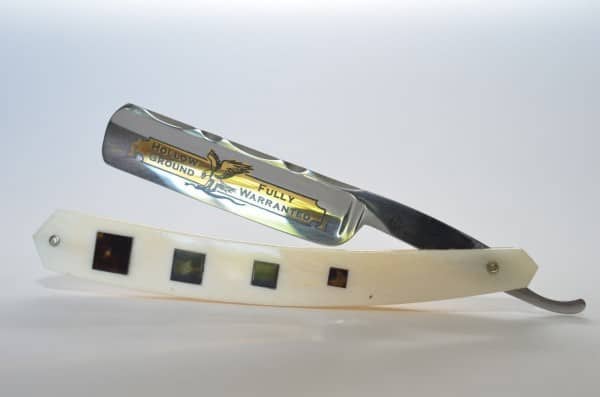
French Straight Razors
When referring to French straight razors, true connoisseurs will only have one name in mind: Thiers-Issard. This brand is to razors what Aston Martin is to cars. Similarly, Dovo and Böker can be compared to Mercedes Benz and BMW. This legendary company was founded by Pierre Thiers in France around 1884. He was a barrel-chested blacksmith who spent his lifetime hammering out top-quality products at the forge, becoming a master razor maker. He passed his knowledge and his business on to his son, also named Pierre Thiers. Over time, various other members of the Thiers family were brought in to work in the business.
Nowadays the company is no longer family owned, but the quality and tradition continues unabatedly, using only Sheffield steel for their blades. If you want to purchase a work of art, take a look at their special editions, or consider their less expensive models. Legend has it that good maintenance will preserve your Thiers-Issard razor for generations.
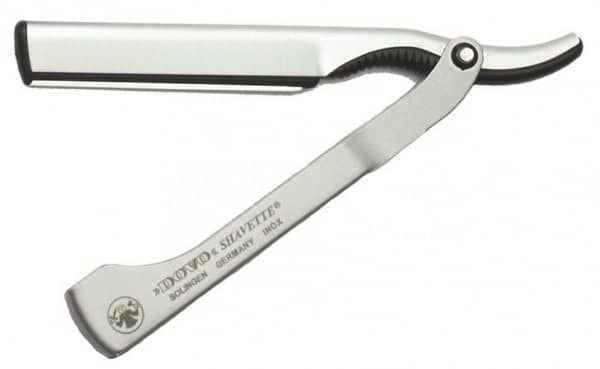
The Shavette (aka Feather) Razor
Often, people confuse a shavette or feather razor with exchangeable cartridges for a straight razor, but it is not. In fact, it is a hybrid between a disposable and a straight razor. It has the form of a straight razor, but it holds a disposable blade. You might have seen or felt them in a barber shop, when the barber cleans up the neck below the hairline. The feather razors are less expensive $ 25 – 50 / € 20– 40 than straight razors, and there’s no need for honing and stropping, so they are a good choice for beginners, or as an interim step before investing in a decent straight razor.
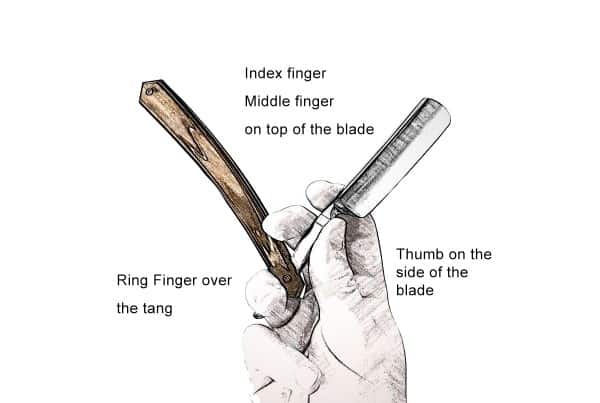
Using a straight razor
Preparation: For a comfortable, close shave, you should follow the preparation steps described in the Double Edge Guide.
How to hold the razor: Using a straight razor is practically identical to using a safety razor. The only difference is the grip you use.
- Hold the straight razor with your ring finger hooked over the tang
- Rest the middle and index finger on the back of the blade
- Place your thumb on the side of the blade next to the center
To make the first pass:
- hold the blade at a 30-degree angle
- move the blade in the direction of the grain, using even strokes with very little pressure
- Always make sure to stretch your skin with the other hand to keep it taut
- If need be, you can can make multiple passes over one area
- Don’t shave against the grain, otherwise you’ll get nicks and cuts
Maintenance
An important thing to know about straight razor blades is that most are high-carbon-content steel. For all the non-metallurgists out there, this means they are not stainless steel and will rust. This kind of steel is used because it results in a sharper blade.
If you plan to use the same steel straight razor for a lifetime, proper maintenance is key:
- Let it rest for at least 24h after you have used it
- At the same time, keep using it at least once a week
- Dry, strop and occasionally hone your blade after using it
Why does a razor need to rest? Right after the shave the tip of the blade may be slightly bent and by letting it rest, it straightens out a little more. So, after 24h the blade is less bent than right after the shave and hence you are less likely to damage your blade when you use the strop.
As a consequence, your blade will remain sharper for a longer time and needs less honing. This theory has not been confirmed scientifically but people I know who have shaved with a straight razor for 20 years definitely swear by it. At the same time, if you can just afford one razor in the beginning, it won’t be a tragedy either. Some even think it was just a marketing ploy to sell more straight razors.
For storage keep it lightly oiled and in a dry place
Strop
A strop is a piece of leather, used to keep the blade dry and correctly aligned. Strops come in different types, shapes and sizes, the most common being the hanging strop. It is a simple strip of leather, with a piece of string or a hook at one end to hang it up.
How to use a strop:
- Hook in one end of the strop or hold it
- With your other hand, pull the razor slowly without pressure up the smooth side – the rough side is not used at all
- When you have reached the top of the strop, you turn the blade over and pull it back down again.
- To sharpen your blade, add strop paste to your strop by covering it completely with paste.
- For visual instructions, watch the video above and jump to 3:50 min.
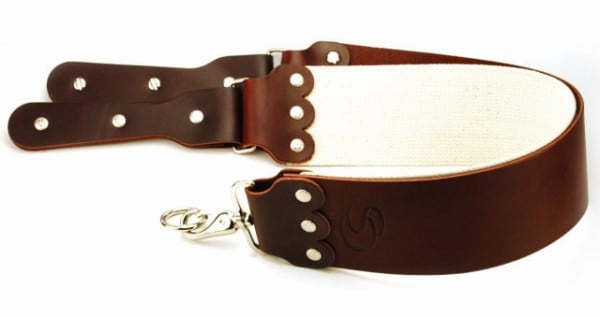
Honing
Over time, the edges of your razor will become blunted. To sharpen the blade again you will need a hone. Honing removes a fine layer of metal from both sides of the razor blade so that the two edges of the blade meet in accurate planes. Once the imperfections have been corrected the razor will be sharp again. You can choose between different hone materials: blackstone, waterstone, ceramic and others. Beginners should start with a Norton 4k/8k stone.
- You will have to make four or five strokes each way to hone a blade.
- The edges of the blade and the spine should touch the hone at all times
- You should hone gently without rushing.
- If you allow the spine to lift off the hone, you will blunt your razor.
- If you are interested in learning about honing in more detail I recommend the book “The Razor Edge Book of Sharpening” by John Juranitch. Although it is not dedicated exclusively to straight Razors, it gives a very good background knowledge on sharpening any kind of blade to perfection.
Conclusion
The straight razor gives you a smooth shave and reduces razor burn and nicks, but then again it will take more time to shave than it does with an electric or safety razor. As a beginner, you should buy a new razor, preferably a Solingen or a Thiers-Issard razor. Always sharpen the blade before use and keep it lightly oiled if you are going to store it in a dry place. At all times, strop your blade before and after the shave, slowly without using pressure. To sharpen the blade you will need a hone or strop paste. It is important to hone in a slow and gentle manner.
Now you should know enough to get started with straight razor shaving. For even more detail, technique, and video instruction, keep reading!
Our Best Shaving Content
Shaving is a ritual that involves products, tools, technique and knowledge to create a smooth, closely shaven face. Each man has different needs, and even though we love a deep dive into one part of shaving, we know that the Big Picture is just as important. To answer the many shaving questions and concerns that we receive from men every day, we put together the most comprehensive Shaving Guide out there. Take look at the video below!
Learn More About our Comprehensive Shaving Guide
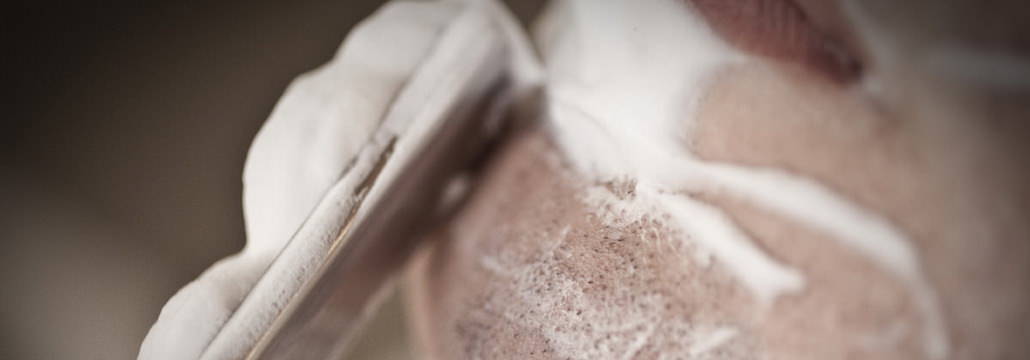

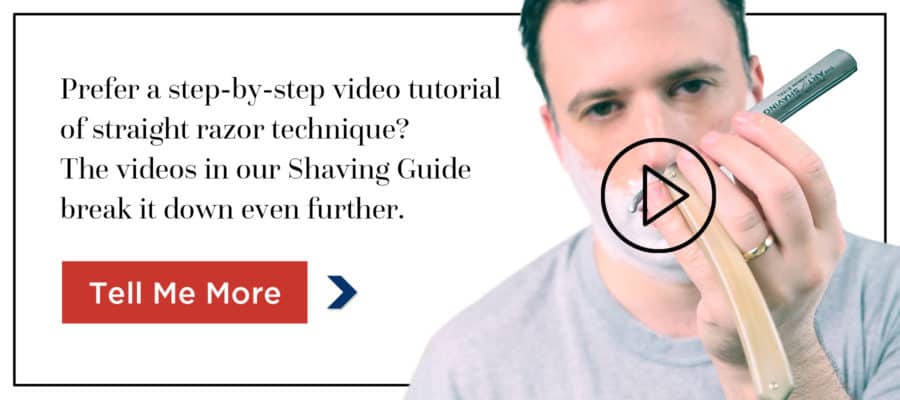
Excellent article. One serious advice: don’t use a straight razor when you use anticoagulantia!!
Why would that be a bad idea? Because of the blade?
Anything that thins the blood means that a nick really bleeds….
I shaved for three years with a straight razor and found diamond sharpening pastes to be the best way to get the fine edge I needed. I used two different pastes on two different sharpening strops. You start with the larger grit paste, wipe the blade clean and finish with the smaller grit paste. Someday I’m going to go back to it, but this time I’ll buy a 7/8 blade first. A lot of it seems to depend on how tough your facial hair is. I wish I had an article like this when I started. I had to get my information piecemeal from various sources or just figure it out myself. I have never seen any of this done correctly in a movie by the way.
Thanks for sharing, do you have a particular brand that you prefer?
There is a technical error in your description of silver steel. Today there is no silver in silver steel.
Michael Faraday experimented with various alloys in the 1820s in an attempt to develop a stain resistant steel. One of the alloys he developed did contain a minute amount of silver, which seems to have given the steel a bright sheen, though it did not make it rust proof. Some razors at the time may have been made using steel with silver as one of the alloying components, but the tern “silver steel” seems to have caught on more as a marketing ploy than anything else.
Today the term is used to denote a tool steel, generally supplied as centerless ground rods; what in the US we call drill rod. The addition of chromium to the alloy, while not enough to create a stainless steel, does give the metal a bright silvery sheen.
According to information on the West Yorkshire Steel page referred to below,
“There is, of course, no silver in it, the term ‘silver steel’ is a traditional description. When the grade was fist developed in the early 1900s the addition of chromium (which at the time was becoming increasingly popular as an alloying element in steel) gave the steel a bright ‘silver’ like finish.”
Here are a few paragraphs about Faraday’s experiments:
http://books.google.com/books?id=30jHG77tCkAC&pg=PA82&lpg=PA82&dq=michael+faraday+silver+steel&source=bl&ots=ah3qzGZkFV&sig=sDPeU5UR1D0aiXt6nt5D4rZ1nu8&hl=en&sa=X&ei=OVvnUeUeiIisB6a1gPgP&ved=0CEwQ6AEwBA#v=onepage&q=michael%20faraday%20silver%20steel&f=false
Here’s a page from a West Yorkshire Steel:
http://www.westyorkssteel.com/tool-steel/silver-steel-bar/
Elliot, thanks for pointing that out, you are right. The information from the manufacturer led us to believe it was silver and after contacting them, they confirmed that they used silver in the past but had stopped using a special form of “cold-steel”.
I’ve been thinking about buying a straight razor and I couldn’t ask for better advice than what is given here. Thanks a lot for this article.
I am glad the guide helped you. Which one will you buy?
If it is true that German razor knives belong to the best, I guess that in this case I will be a patriot and opt for Böker. The King Cutter with a white handle is affordable and yet very elegant to look at.
I have a high-end Dovo and a Feather Plier. Honestly, the Feather is so much simpler to use as a daily shaver. I save the Dovo for the weekends when I can devote more time to the honing, stroping, etc. . That said, the Feather isn’t anything to look at.
How could you possibly discuss straight razor shaving and not talk briefly about Kamisori blades…
This post is a good introduction to the art, but for those that hunger for more information I strongly recommend visiting: http://straightrazorplace.com/
-Suave
Why do you consider Kamosori so positively? Formerly made in Korea, and now on Solingen by a German company they are more geared towards the expert but why buy from them if you can buy from the manufacturer directly?
More here http://straightrazorplace.com/general-razor-shaving-related-discussion/5692-clarification-kamisori-razors.html
Dear Sven,
You asked why people using anticoagulantia are advised to refrain from the use of a straight razor.
Well, the answer is already in the word “anticoagulantia”: prevention of clotting of the blood.
Experience has learned that if somebody cuts himself or is cut (without any criminal intention !) with a straight razor, the cut is longer and deeper than a cut made with a normal razor (whatever that might be). Little cuts made by a normal razor are so small that the bleeding can be stopped by, what is sometimes called, lunar caustic, or, and that’s easier, a small pluck of cotton wool.
With the use of anticoagulantia that will prove sufficient too, but when the cut is a bit larger, the blood will not stop at all and you will need professional assistance.
So, although I am in great favor of style, don’t invite your Nemesis!
Thanks for your explanation.
Alexanders soldiers were Greeks no mayter if they werr coming ftom Macedonia or another Greek area.
Later he included Persians and from other Asian territories he conquerred.
I m a retired US Army medic, and I switched to a straight razor while deployed to Iraq in 2011, and have never looked back. I’m currently attending barber college, all of my clients agree that a hot lather, straight razor shave is the best shave you can achieve.
Thanks for sharing!
Actually, despite the Shavette being treated like an interim step or something ‘below’ the straight razor. Many agree that the Shavette is in fact more challenging to use than a straight razor. I’ve read comments about how it’s common to cut yourself when moving from the straight to a shavette but not the other way.
Great article. I would say that yes, you do use the canvas side of a strop. Do 10 laps before switching to smooth side and see how much better your shave is. Also canvas first dries blade post shave